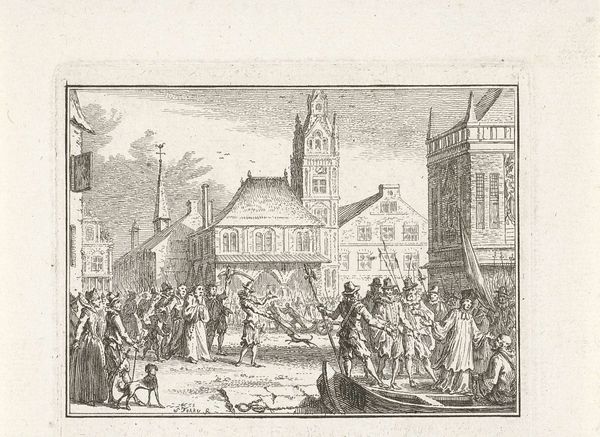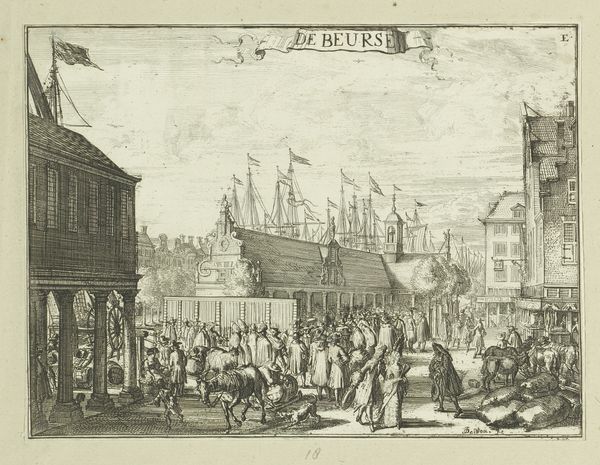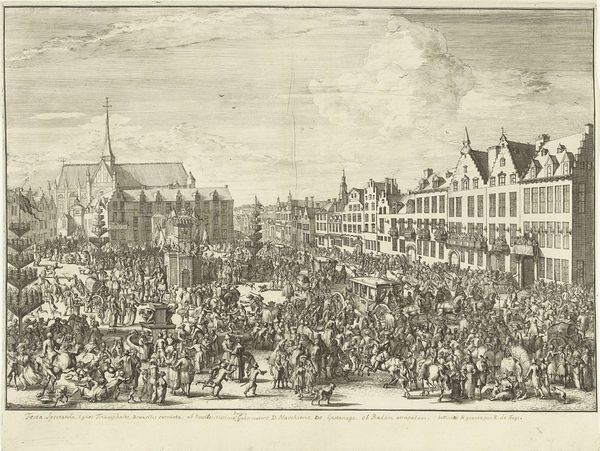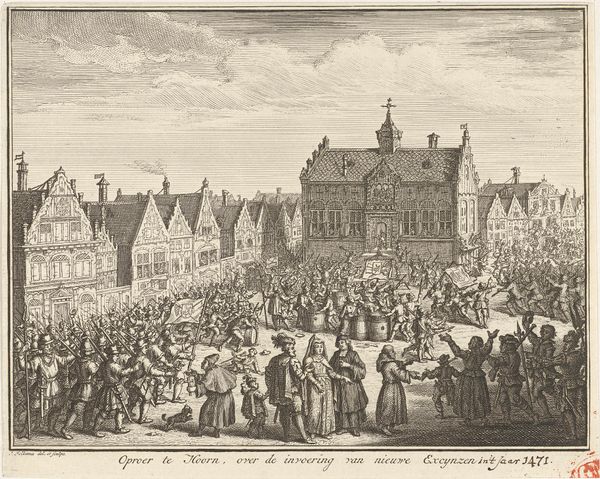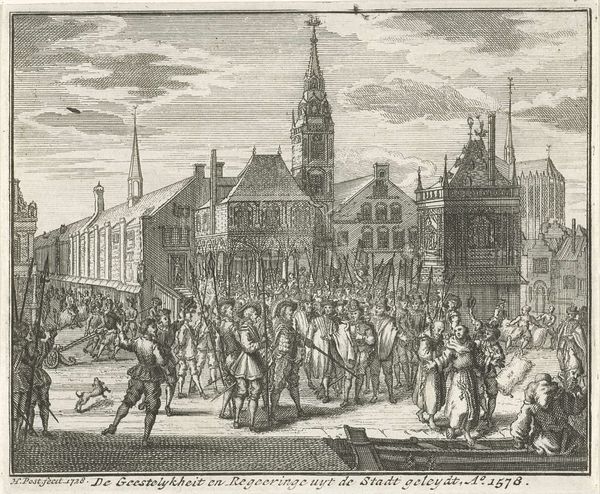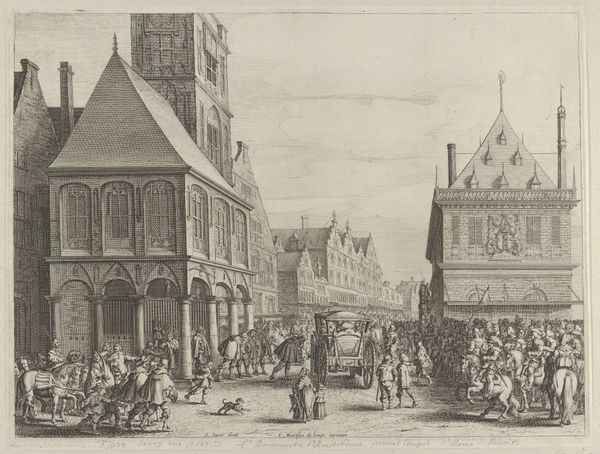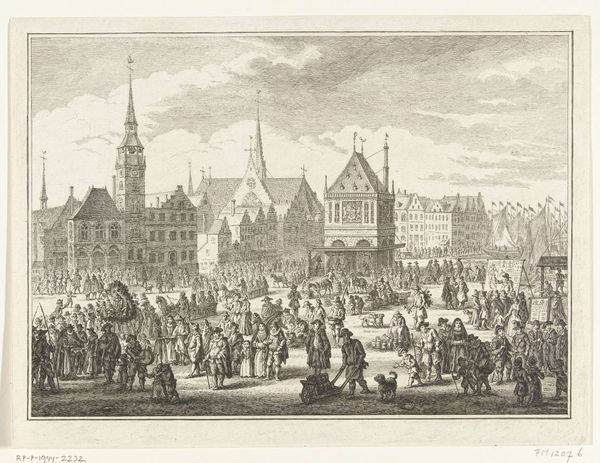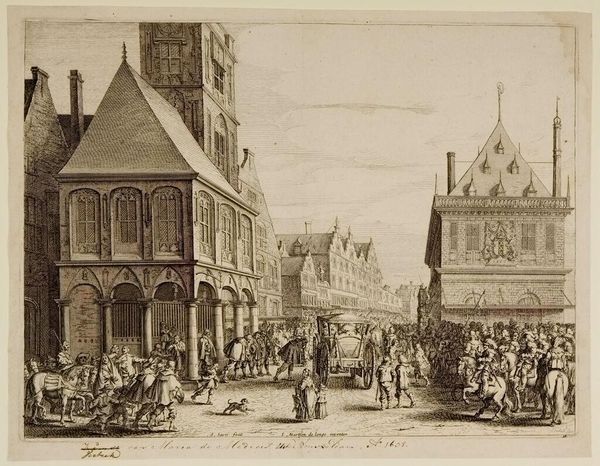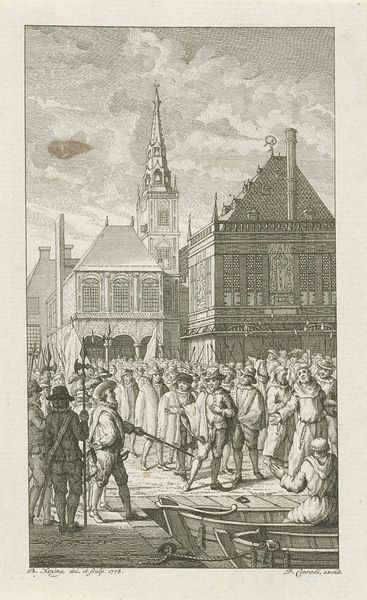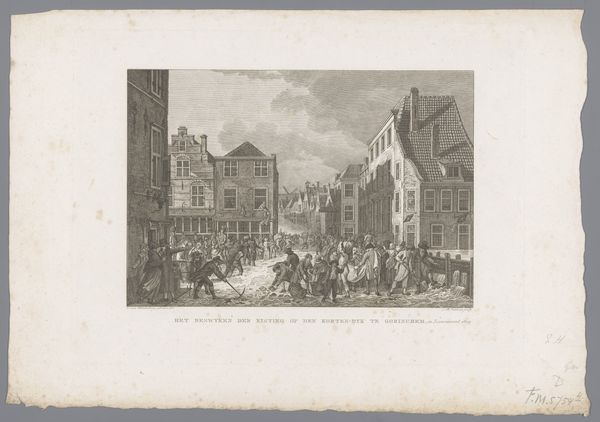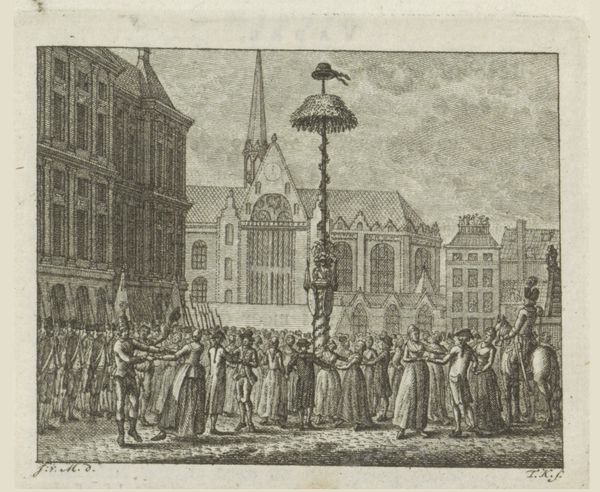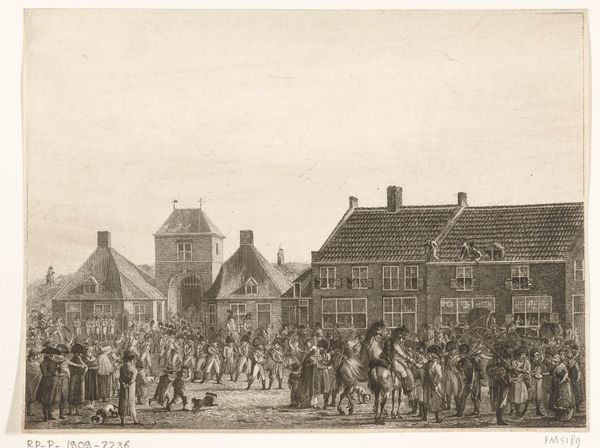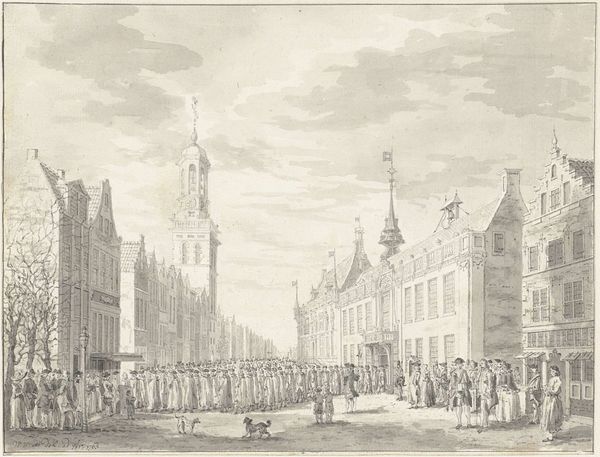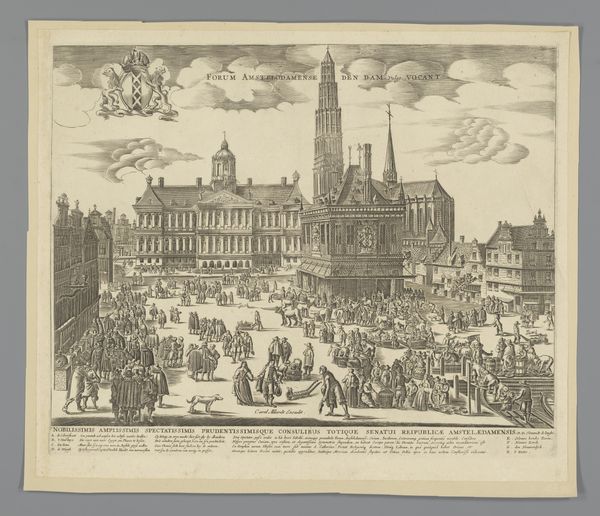
print, engraving
#
narrative-art
#
baroque
#
dutch-golden-age
# print
#
line
#
cityscape
#
history-painting
#
engraving
#
realism
Dimensions: height 111 mm, width 135 mm
Copyright: Rijks Museum: Open Domain
This anonymous engraving depicts a lepers' procession in Amsterdam in 1604, capturing a ritual laden with social and religious significance. Observe the central figures: lepers, identifiable by their traditional garb and the clappers they carry to warn others of their approach. These individuals, marginalized yet communal, enact a public display of suffering, a concept that has roots in the medieval flagellant processions, where public penance was seen as a means of communal purification. Consider, too, how the act of procession itself—a recurring motif throughout history—reappears from ancient Roman triumphs to Christian pilgrimages, each iteration a collective expression of belief, hope, or contrition. Here, the lepers' march reflects not only their physical isolation but also a deeper, shared human experience of exclusion and the need for communal recognition. It’s an emotional echo across centuries, a stark reminder of society’s treatment of the "other" and the cyclical nature of these themes. The image resonates with the powerful, subconscious human desire to witness and understand suffering, a force that transcends time, continually re-emerging in art and life.
Comments
No comments
Be the first to comment and join the conversation on the ultimate creative platform.
